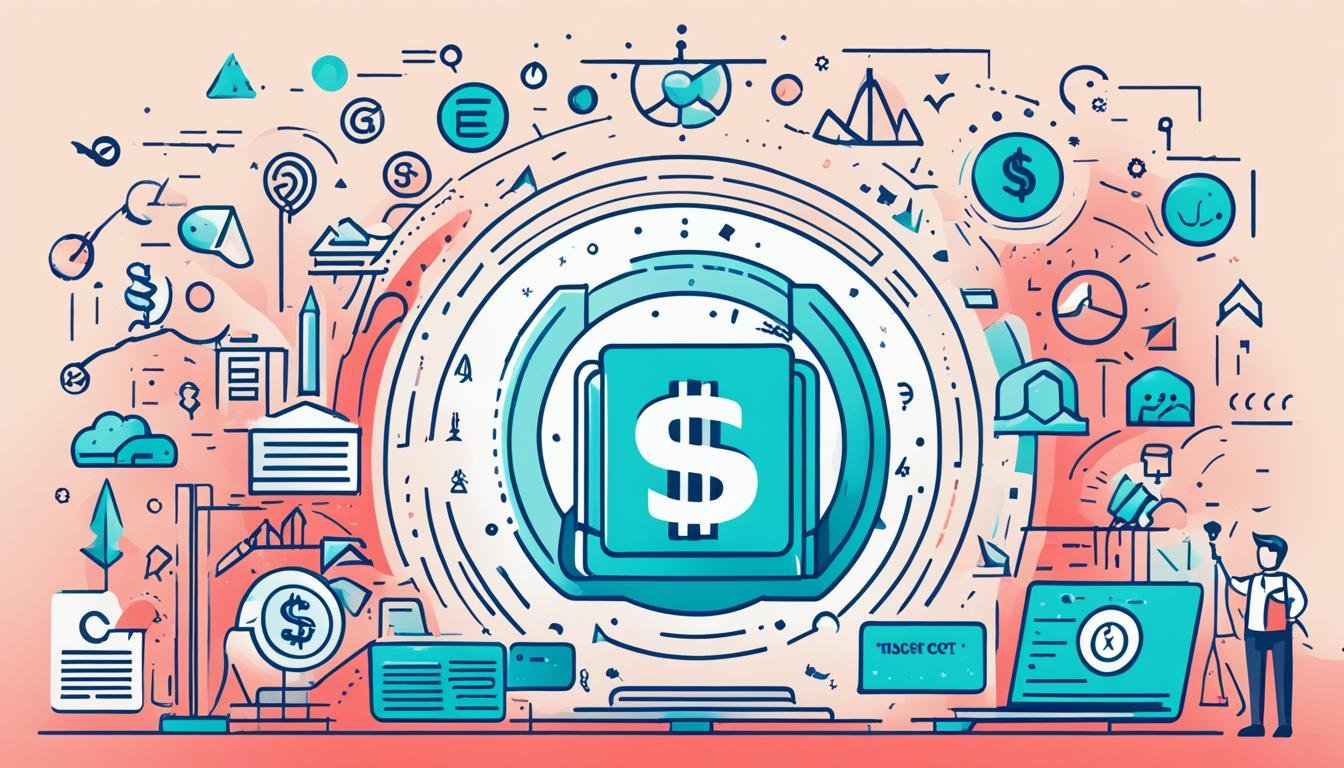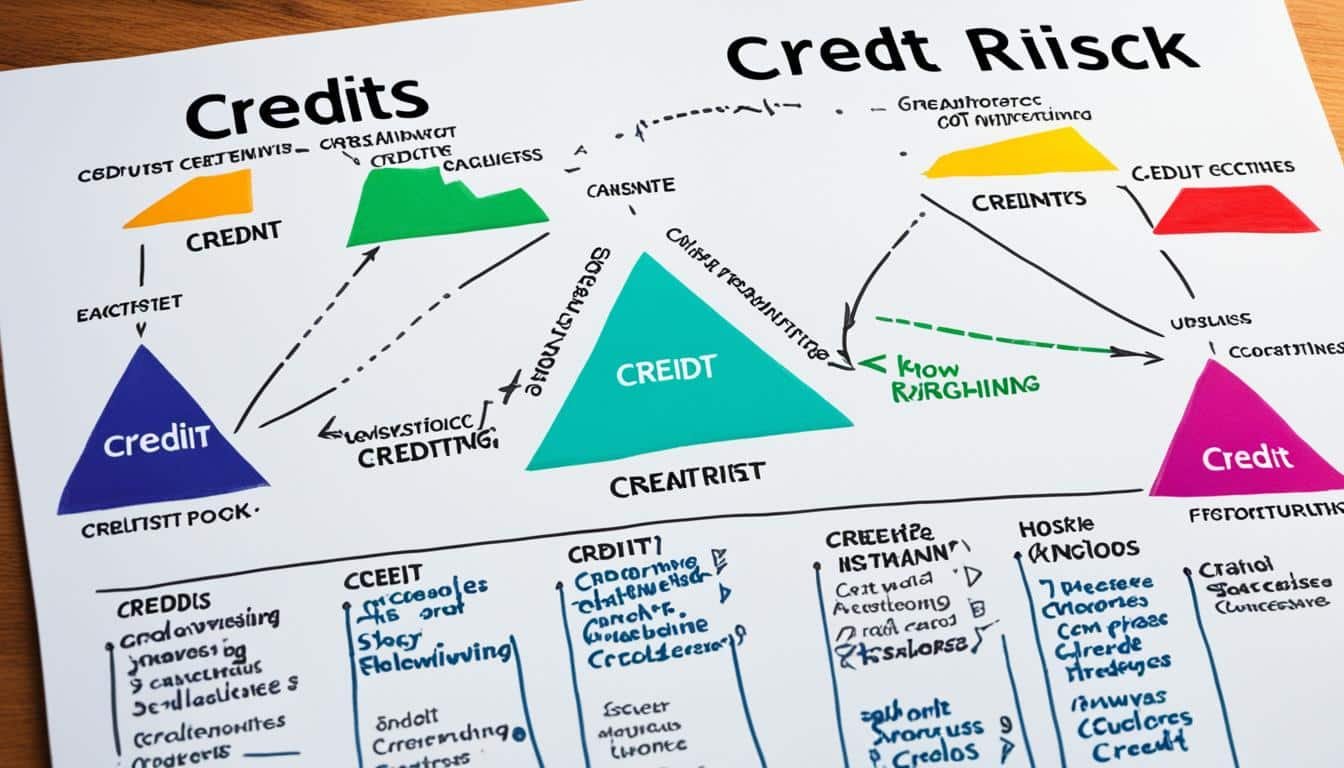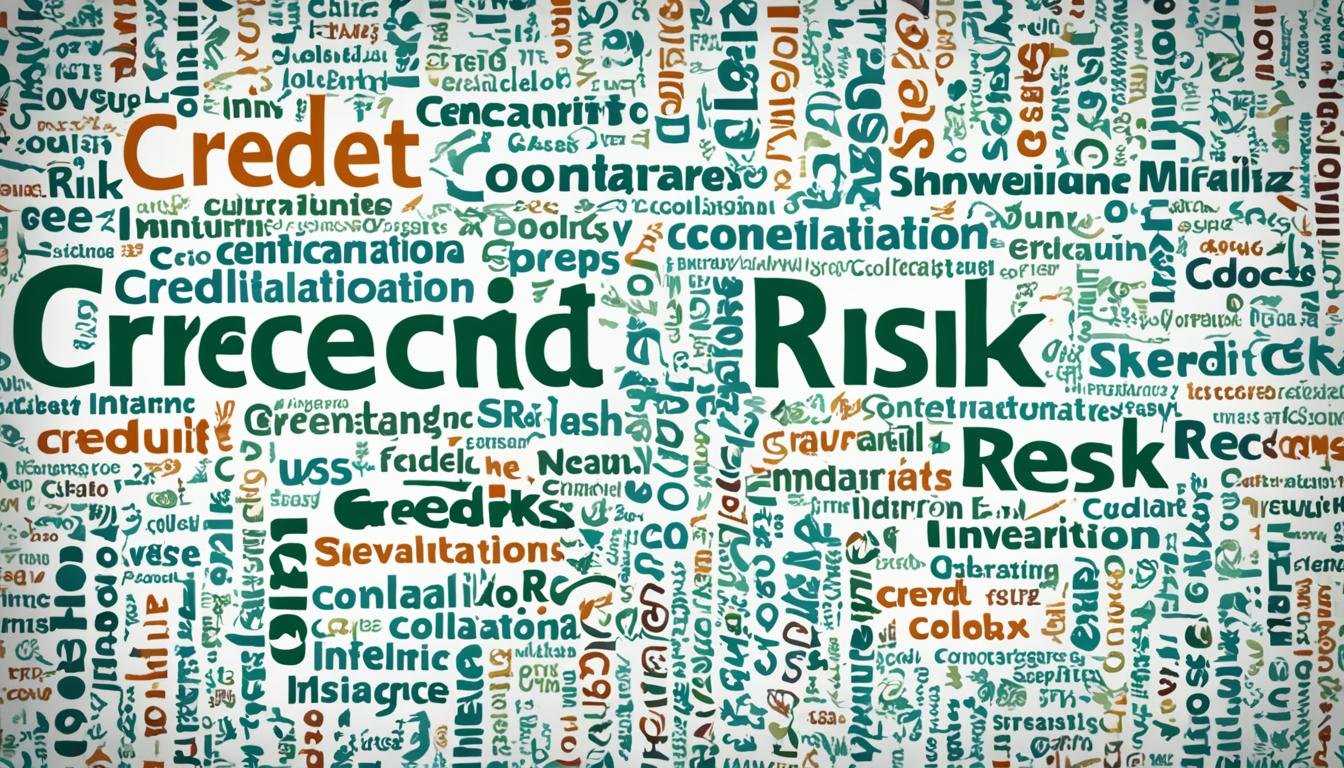Credit risk is the chance of losing money when a borrower doesn’t pay back a loan. It’s the risk that a lender might not get back the money they lent, causing cash flow problems and higher costs to collect. Lenders look at things like how likely a borrower is to pay back, their current debts, and their income to figure out the credit risk.
It’s hard to know for sure which borrowers will not pay back. But, by carefully checking and reducing credit risk, lenders can lessen the impact of losses. The interest rates lenders set are their way of getting paid for taking on this risk. Managing credit risk well is key for banks, fintechs, and other lenders to keep risks low and profits high.
Key Takeaways
- Credit risk is the risk of financial loss due to a borrower’s failure to repay a loan.
- Lenders assess factors like creditworthiness, debt load, and income to evaluate and manage credit risk.
- Proper credit risk evaluation and mitigation can help reduce the severity of losses from defaults.
- Interest rates charged to borrowers are a lender’s reward for assuming credit risk.
- Effective credit risk management is critical for financial institutions to minimize risks and maximize profits.
Understanding Different Types of Credit Risk
Lenders must look at various credit risks when they give out loans. Fraud risk means checking who you’re lending to to stop fraud like first-party fraud or synthetic identities. Default risk is about if the borrower can pay back the loan. Counterparty risk happens when one side of a deal doesn’t keep up, causing trouble for the other side.
Credit spread risk comes from changes in interest rates, which can lower the value of assets and lead to losses. Concentration risk is when a lender puts too much money into one area, making them more at risk if that area does badly. It’s important for lenders to know and manage these risks well to make good loan decisions and keep their money safe.
Fraud Risk
- Verifying applicant identity to prevent first-party fraud and synthetic identities
- Implementing robust fraud management and identity verification processes
Default Risk
- Assessing a borrower’s ability to meet loan obligations and make agreed-upon payments
- Evaluating counterparty risk when one party fails to fulfill contractual obligations
Credit Spread Risk
Caused by changes in interest and risk-free return rates, which can decrease the market value of credit portfolios and result in losses.
Concentration Risk
Occurs when a significant portion of a lender’s portfolio is focused on a single sector or asset class, making them vulnerable to adverse events affecting that area. Diversification is key to mitigating concentration risk and systemic instability.
“Effectively identifying and managing these diverse credit risks is crucial for lenders to make sound lending decisions and protect their financial institutions.”
Managing Credit Risks for Banks and Fintechs

Banks and fintechs face a big challenge. They must balance strong credit risk management with great customer experiences. If they’re too cautious, they might lose customers and can’t serve as many people. But, being too lenient can lead to big financial losses from defaults.
It’s crucial for lenders to know the different types of credit risk. They need to assess and manage these risks well. This helps them make smart lending choices, use resources wisely, and stay safe from financial problems.
For banks and fintechs, managing credit risk means doing several things:
- Using digital tools to check if borrowers can pay back loans
- Keeping an eye on credit risk signs to spot potential issues
- Spreading out the types of loans they offer to reduce risk
- Using advanced tools to better understand credit risk
- Having plans to deal with defaults and keep loans healthy
By focusing on credit risk management, banks and fintechs can balance growing their customer base, keeping customers, and being smart with risks. This makes them stronger over time.
“Effective credit risk management is the cornerstone of sustainable growth for banks and fintechs in the digital age.”
| Metric | Banks | Fintechs |
|---|---|---|
| Average Default Rates | 3.5% | 5.2% |
| Credit Portfolio Diversification | High | Moderate |
| Compliance with Regulatory Standards | Extensive | Evolving |
Calculating Credit Risk

Predicting which borrowers will not pay back their loans is a big challenge for lenders. But, by using different credit risk methods, banks and fintechs can better understand the risks. This helps them make smarter lending choices.
Credit Risk Calculation Methodologies
A common way to measure credit risk is the formula: Credit Risk = Default Probability x Exposure x Loss Rate. This method helps lenders figure out the chance of a borrower defaulting, how much they could lose, and what they might get back if they do default.
Lenders also look at a borrower’s credit score, debt compared to income, and total debt. They check the “five Cs of credit” – credit history, ability to repay, capital, collateral, and loan terms. This gives a full picture of the borrower’s credit risk.
Many banks and fintechs use special software, like GDS Link, to automate risk checks. This makes lending faster and helps manage credit risk better.
“Effective credit risk management is essential for the financial stability and success of any lending institution.”
By using these credit risk methods, lenders can make better decisions. This helps them reduce losses and keep their lending strong over time.
The Importance of Effective Credit Risk Management
Managing credit risk well is key for lenders to cut down on financial losses and keep their businesses safe. Fraud can lead to big direct losses and hidden costs like fraud exposure, reputational damage, and losing good customers. Sophisticated fraud tactics, like using synthetic identities, make it harder for lenders to spot and fight fraud risk. If lenders can’t handle more risk, creditworthy applicants might struggle to get the financial services they need.
By using strong credit risk management strategies, lenders can make better lending choices, lower default rates, and boost their business stability and profits. This is crucial in today’s fast-changing financial world. Credit risk management importance keeps growing as lenders face new fraud threats and customer retention challenges.
One important part of good credit risk management is knowing how to accurately measure different credit risks. These include default risk, credit spread risk, and concentration risk. By understanding these risks and their effects, lenders can create strategies to lessen them. This helps keep their lending portfolios strong over time.
By focusing on credit risk management importance, lenders can deal with the complex financial world today. They can reduce financial losses and improve their credit access and customer retention abilities.
credit risks and Credit Underwriting Processes

Learning about credit underwriting is key to handling credit risks well. This process checks if someone can pay back a loan. It looks at many risks, like fraud risk, default risk, credit spread risk, and concentration risk.
Complexities in Commercial vs. Consumer Underwriting
Assessing credit for businesses is harder than for individuals. It needs more strategy, time, and resources. Lenders look at the business’s finances, cash flow, and debts. They might charge more interest rates or ask for personal guarantees from owners to reduce risks.
For individuals, underwriting is simpler. It looks at income, assets, and credit history. Yet, lenders still must check if the borrower can pay back the loan and handle the risks.
| Commercial Underwriting | Consumer Underwriting |
|---|---|
| Evaluates the creditworthiness of businesses | Evaluates the creditworthiness of individual borrowers |
| Requires more strategic analysis, time, and resources | Typically less complex than commercial underwriting |
| Focuses on factors like financial stability, cash flow, and debt load | Focuses on factors like income, assets, and credit history |
| Lenders may structure loans with higher interest rates or personal guarantees | Lenders still need to analyze the borrower’s ability to repay the loan |
Understanding commercial underwriting and consumer underwriting helps lenders make better choices. They can manage risks better and set loan terms that work for everyone.
Systemic Risk and Its Impact on Credit Risk

Systemic risk, also known as market risk, can greatly affect credit risk. Things like changes in stock prices, interest rates, and currency values can shake the economy and make borrowers less creditworthy. For example, if the economy slows down or interest rates go up, borrowers might struggle to pay back their loans. This could lead to more defaults.
Lenders need to think about how systemic risk might change their loan portfolios and borrowers’ creditworthiness. Not considering systemic risk can make lenders more unstable, as seen in the 2008 financial crisis and the Silicon Valley Bank collapse.
Things like systemic risk, market risk, equity risk, interest rate risk, and currency risk can cause an economic downturn and rising interest rates. These can hurt the borrower creditworthiness and make lenders more financially unstable.
| Systemic Risk Factors | Potential Impact on Credit Risk |
|---|---|
| Equity Price Fluctuations | Reduced borrower creditworthiness during economic downturns |
| Interest Rate Movements | Increased debt servicing costs and default risk for borrowers |
| Currency Exchange Rate Changes | Increased costs and repayment challenges for borrowers with foreign currency-denominated loans |
Understanding how systemic risk affects credit risk helps lenders create better risk management plans. This way, they can lessen the effects of big market events on their loans and stay financially stable.
“Systemic risk is the risk of collapse of an entire financial system or entire market, as opposed to risk associated with any one individual entity, group or component of a system.”
Credit Risk Mitigation Strategies

In the world of banking and fintech, managing credit risk is key for stability and profits. Lenders use many strategies to lower their risk. These include using risk modeling and analytics tools.
Risk Modeling and Analytics
GDS Link’s platform helps banks and fintechs analyze data in real-time. They can do stress testing and scenario analysis to manage risks better. With the latest risk modeling and analytics, lenders make smarter choices. This lowers default rates and makes their businesses stronger.
Portfolio Diversification
Portfolio diversification is another way to manage risk. By spreading out their loans, lenders avoid putting all their eggs in one basket. This makes their lending more stable. Keeping an eye on the portfolio and making changes as needed is crucial.
Using technology for risk modeling and analytics helps lenders deal with credit risk. A diverse loan portfolio also helps. This way, lenders can succeed in the long run.
The Role of Credit Scoring Models

In the lending world, credit scoring models are key. They look at your credit history, credit reports, and other credit data. They give you a score, like the FICO score, showing how likely you are to pay back loans.
Lenders use these credit scoring models a lot. They help make smart choices about giving credit, setting loan prices, and handling credit risk. By using these models, banks and fintechs can make lending faster, safer, and easier for people who need credit.
Credit scoring models turn complex financial info into a simple score. This score is great for credit risk assessment. It lets lenders quickly check if someone is likely to pay back a loan.
“Credit scoring models have revolutionized the lending industry, enabling more efficient and data-driven decision-making processes.”
These models give financial institutions important insights. They help make better loan decisions, set fair prices, and serve customers better. As finance changes, the importance of credit scoring models in credit risk management will grow. They will shape the future of lending and credit choices.
Also Read : What Are The Different Credit Card Types Available?
Conclusion
Managing credit risks well is key for lenders like banks and fintechs. They need to handle fraud, default, credit spread, and concentration risks. By doing this, lenders can make better lending choices, cut down on losses, and boost their profits.
Using advanced risk modeling and analytics tools helps lenders manage credit risks. Also, having a varied loan portfolio is important. These strategies help lenders stay strong in the fast-changing financial world.
As credit underwriting gets more complex, managing credit risks well is vital. It helps financial institutions stay ahead, serve their customers, and keep their finances stable over time.
In the end, handling credit risks well is crucial for lenders, including banks and fintechs. It helps them grow and succeed in the changing financial scene.
FAQs
Q: What is credit risk?
A: Credit risk refers to the risk that a borrower may default on a loan or fail to meet their credit obligations.
Q: What are the types of credit risks?
A: The types of credit risks include borrower risk, interest rate risk, trade credit risk, personal lending risk, and low credit risk among others.
Q: How can credit risks be mitigated?
A: Credit risks can be mitigated through credit risk analysis, establishing credit limits, assessing the credit risk profile, and following best practices in credit management.
Q: How is credit risk assessed?
A: Credit risk is assessed by analyzing the borrower’s credit rating, financial risk, principal and interest repayment capacity, and the overall credit risk associated with extending credit.
Q: What are the best practices in credit management?
A: Best practices in credit management include having robust credit processes, continuous risk monitoring, utilizing credit risk models, and making informed credit decisions.
Q: Why is trade credit considered a credit risk?
A: Trade credit poses a credit risk as there is a risk of loss if the buyer defaults on payments or does not fulfill their credit obligations within the agreed timeframe.
Q: What is the importance of personal lending in credit risk analysis?
A: Personal lending plays a crucial role in credit risk analysis as it helps determine the risk profile of individual borrowers and assess their likelihood of defaulting on loans.




